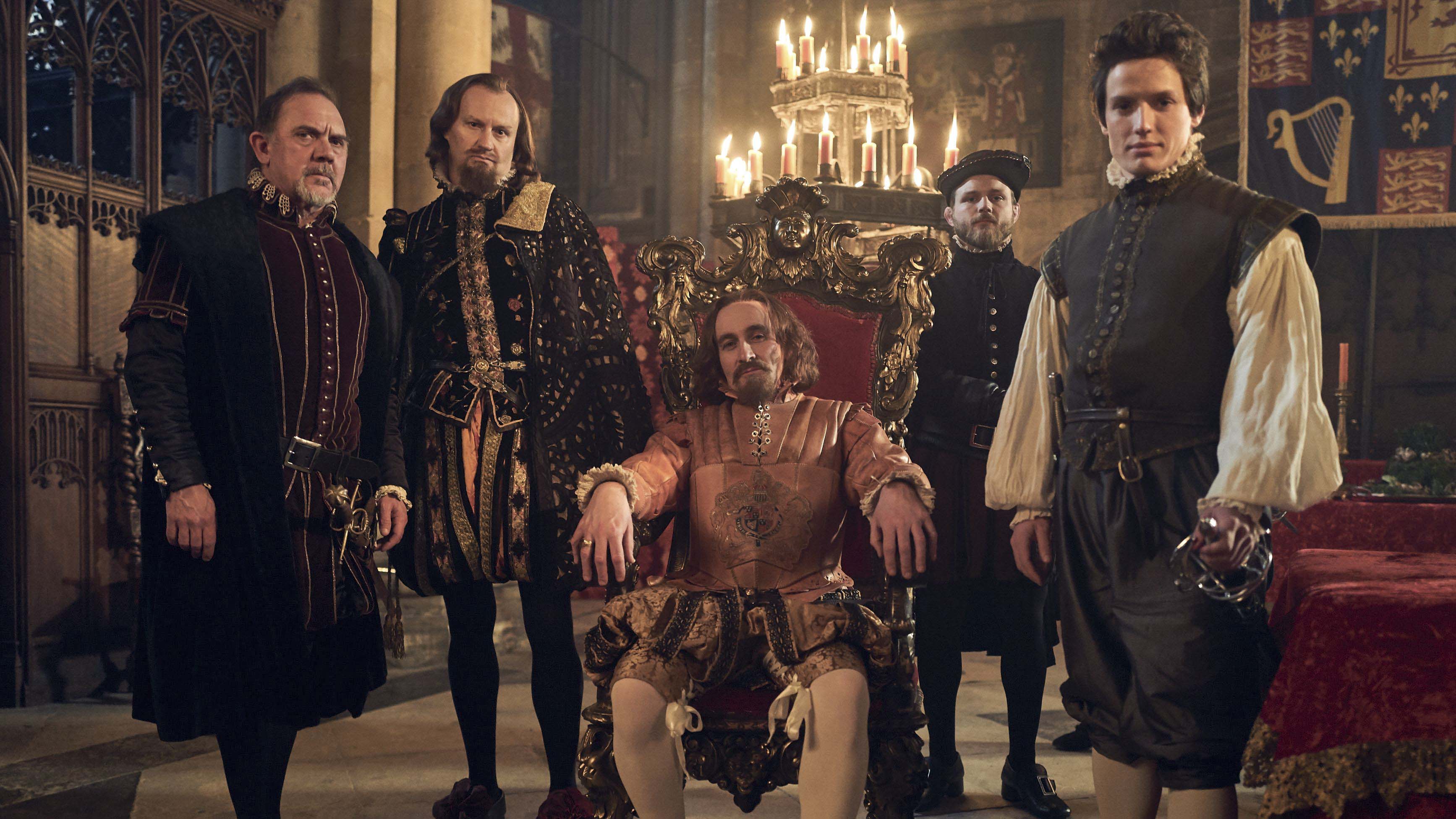
The Gunpowder Plot: A Rutland Rebellion
The little hamlet of Stoke Dry, covers about one and a half square miles. It has a population of fewer than 50 people, just 14 homes and the village’s Eyebrook Reservoir was used as a training ground for the Dambusters as they learned how to drop their famous bouncing bombs… but that not the only explosive bit of history that the village is known for!

November brings to mind huddling in front of a bonfire and lighting fireworks, but never far from our minds is the fact that the event commemorates a daring and thankfully unsuccessful plot to destroy the British parliament and its monarchy. It’s hard to believe but this violent and anarchic plot actually originated in what is today a peaceful, tiny and idyllic rural hamlet, right here in Rutland.
On 5th November 1605, Guy Fawkes was discovered with 36 barrels of gunpowder underneath the House of Lords. The plot to kill King James I had been foiled, and the House of Lords along with the King, had been saved.
In January 1606, during the first sitting of parliament since the plot, the Observance of 5th November Act 1605 was passed, making services commemorating the event an annual feature of English life. Effigies or ‘Guys’ are made – obviously relating to Guy Fawkes – out of clothes stuffed with newspaper and then thrown on bonfires.
Interestingly, a man local to Rutland was part of the Plot, but he was also the man that some believe stopped the regicide too. Born in 1567, Frances Tresham would live a life that lead him to playing a notorious role in the infamous Gunpowder Plot of 1605. Son of Thomas Tresham, his actions should have come as no surprise considering his background.
His father was a widely disliked, rebellious and stubborn landowner known for executing those who did not follow his opinions.
A fusion of poor life choices and a lack of parenting led his son down a doomed path.
Frances Tresham was renowned for having a hot-headed nature. He landed himself time in prison for various crimes ranging from assaulting a gentleman and his pregnant daughter to the bolder act of joining open revolts including the Essex Rebellion.
Only his family’s status and riches could save him from the consequences of his actions, however he was not deterred from involving himself in more conspiracies. He became an increasingly unstable character and was not to be trusted with his family’s money as he plunged them into financial worries with his hedonistic London lifestyle. Catholicism had always played a pinnacle role in Frances’s life and drove most of his criminal activity.
He had grown up in a time where his faith had faced so much persecution from the long train of protestant rulers that England had crowned.
Queen Elizabeth I was the main ruler who challenged the Christian faith, and she became the greatest Protestant power in Europe during her rein which lasted until 1603.
She provoked the crisis and pushed the situation to breaking point when she executed 100 Catholic priests in order to provide herself with a sense of security.
Her death in 1603, celebrated by many, gave hope for those of the Catholic faith; this could be their chance to put an end to all the religious conflict. England’s new monarch, King James I, was known to be more tolerant and peaceful than his predecessor with a desire to restore harmony. However, this was not to be and tensions between the Protestants and Catholics became higher than ever.
There was only one solution; to kill the king. An extravagant plot to blow up the House of Lords, kill the King and all other members of parliament was formed at Stoke Dry Church, in Rutland, by Robert Catesby. Catesby had recruited 11 fellow Catholics to his cause but was running out of money.
With an annual income of over £3,000, Tresham was one of the wealthiest people known to the plotters, despite his huge debts. Catesby’s mother was Anne Throckmorton, an aunt of Tresham’s. The two cousins had been raised together and shared a close relationship.
Therefore, Frances Tresham was admitted to the group. Catesby wanted two things from him; £2,000, and the use of Rushton Hall. Catesby received neither. Following the meeting, he hurried back to Rushton Hall and closed his household, taking care to hide family papers. He then returned to London with his mother and sisters.
However, Tresham’s role in the plot became more curious and complicated than simply acting as a rather useless accomplice.
Later in October, during a meeting at which Tresham was present, the conspirators discussed the fates of several notable Catholic peers. Foremost in Tresham’s thoughts were the lives of his two brothers-in-law, William Parker, 4th Baron Monteagle, and Edward Stourton, 10th Baron Stourton, but Catesby proclaimed that ‘the innocent must perish with the guilty, sooner than ruin the chances of success.’
As the last few details were being finalised that month, on 26th October Monteagle received an anonymous letter while at his house in Hoxton. Although he was already aware of certain stirrings even before he received news of the letter from Monteagle, Robert Cecil, Secretary of State, who lived at Burghley, did not yet know the exact nature of the plot or who was involved and had elected to watch to see what would happen.
When Monteagle’s letter was shown to the King on 1st November, James felt that it hinted at ‘some strategem of fire and powder,’ at the part where the anonymous author had stated ‘they shall receive a terrible blow this Parliament.’
King James perhaps felt it was an explosion exceeding in violence the one that killed his father, Lord Darnley, in 1567. The following day, members of the Privy Council visited James to inform him that a search would be made of the Houses of Parliament, both above and below.
Tresham persuaded his accomplices that he had no part in the Monteagle letter, however many are certain that he played a more overt role in the betrayal of the plot.
When Fawkes was caught and arrested on 5th November, he called himself John Johnson, and was interrogated by members of the King’s Privy Chamber, but on 6th November James ordered that John Johnson be tortured.
He was finally broken and revealed his true identity on 7th November, and on 8th November he began to name some of those with whom he was associated. Tresham’s involvement was attributed with only a minor role, but while his compatriots had fled London the moment they discovered Fawkes had been caught, Tresham stayed in the city.
On 12th November 1605 he was arrested, thrown into the Tower of London and confessed. He admitted to concealment but denied active involvement in the conspiracy.
He quickly became ill and contracted a strangury in his urinary tract. Despite treatment from doctors his condition only became worse and he died on 23rd December.
His last moments on his deathbed were spent contesting his innocence. Following his passing, his head joined those of his fellow conspirators Thomas Percy and Robert Catesby on display in Northampton while his body was thrown into a hole at Tower Hill; a gruesome ending to an eventful life.
Three Years in the Making: Timeline of Terror
1601 – 1603 The Plotters Meet: A circle of Catholic men meet regularly to discuss the future of England.
March 1603 A New Monarch: Elizabeth I dies and James I becomes king, also a protestant and against Catholicism.
January 1604 Catesby’s Plan: When James I continues to fine Catholics and order them to leave England, Robert Catesby, Thomas Wintour and John Wright start plans.
April 1604 Fawkes Recruited: Guy Fawkes is recruited as an explosives expert.
May 1604 Sworn to Secrecy: The conspirators take an oath that swears them to secrecy on a religious primer.
February 1605 Gunpowder In: The plotters tunnel from a house near Westminster to Parliament and smuggle the Gunpowder in.
March 1605 Rented Vault: They rent a vault under Parliament to store the gunpowder.
Summer 1605 Money Men: Francis Tresham and other rich men join the conspirators.
October 1605 Monteagle Letter: Lord Monteagle receives a warning letter and hands it to Robert Cecil. The plotters continue despite the risk and Tresham is accused of writing the letter.
1st – 5th Nov 1605 Investigations: King James sees the letter and orders an investigation immediately. The vaults are searched and Guido Fawkes is found. He hides his identity by calling himself John Johnson but he is arrested, questioned and soon tortured.
6th – 8th Nov 1605 Plotters Flee: The rest of the plotters flee and die in a shootout with sheriffs or are arrested and brought to the Tower of London. Catesby, Percy and the Wright brothers die here.
Nov 1605 – Jan 1606 Prosecution: Some of the remaining plotters make their confessions, they’re found guilty of high treason and are hanged, drawn and quartered.
Gunpower Plot Facts
- Hanging, drawing and quartering was the expected fate for a traitor. But in fact Guy Fawkes threw himself to his death, breaking his neck, before he could have his genitals cut off and his stomach cut open. His remains were sent to ‘four quarters of the kingdom’ as a warning to other would-be conspirators.
- Fawkes won the begrudging admiration of King James, who declared him to have a Roman resolution’ in sticking to his convictions even amid torture.
- Experts believe the gunpowder would have decayed before being lit and probably wouldn’t have yielded the desired effect to raze parliament to the ground.
- Once a year, before the State opening of Parliament, the Yeoman of the Guard still search the cellars of the houses of Parliament as instructed by King James and subsequent monarchs.






